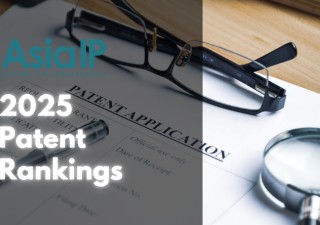Go digital and be simple in 2020 with new patent rules in India
30 November 2020

The year 2020 has transformed the world by empowering people to continue working during the pandemic lockdown through digitization and IT tools providing online access of all required information.
There have been several changes in the Indian Patent Rules in the past two years. The main changes have been related to recognition and incentives for startups and SMEs, as well as for female applicants for patents in terms of fee concessions and expedited examinations. The recent Indian Patent (Amendment) Rules 2020, notified on October 20, 2020, ( Rules 2020) made procedural changes with respect to the submissions of the statement of commercial working along with document submissions in PCT national phase applications.
PCT national phase applications: Priority and translation
The Rules 2020 clarify that the requirement of filing a certified copy of the priority document within 31 months of PCT priority date would be considered to be satisfied if said document is available in the digital library of the International Bureau (IB) and a request is made for its access. Thus, a priority claim cannot be disregarded by the Indian patent office if it has digital access of the priority document.
Further, the Rules 2020 relaxes the translation requirement of non-English PCT priority documents. The English translation of the priority document is required to be submitted only if Rule 51bis1(e) of the PCT Regulations are applicable. This means that the English translation of priority document is required to be submitted only if (i) validity of priority claim is relevant to patentability determination; or (ii) where the international filing date was accorded on the basis of the incorporation by reference of an element or part; or addition of missing parts; or correction of erroneously filed elements. The translation filing is thus for the purposes of determining whether such corrected element or part is completely contained in the priority document concerned.
Indian granted patents: Commercial working statements
Indian patent law considers that the protection and enforcement of patent rights contribute to the promotion of technological innovation and to the transfer and dissemination of technology, to the mutual advantage of producers and users of technological knowledge and in a manner conducive to social and economic welfare, and to a balance of rights and obligations. Thus, patents are granted to encourage inventions and to secure that the inventions are worked in India on a commercial scale and to the fullest extent that is reasonably practicable.
Patent post-grant formality requirements in India include a commercial working statement to be submitted annually besides the payment of a maintenance fee. The Rules 2020 bring to the limelight some of the aspects of commercialization that a patentee needs to consider while submitting such statements before the Indian patent office.
The term “patentee” denotes the person or entity entered on the Indian patent register as the grantee or proprietor of the patent and also includes an exclusive licensee. The obligation to submit a commercial working statement of Indian patents is on the patentee as well as the licensee, exclusive or otherwise. The registration of license agreement(s) of a patent is thus critical.
The Indian patent law requires that any licence, mortgage, or assignment of a patent or of a share in a patent, or the creation of any other interest in a patent, to be in writing specifying all the rights and obligations. Further the licensee or any person who becomes entitled by any interest in a patent is required to apply for registration of his title or notice of interest in the Indian patent register. The patentee may also fulfil this obligation of the licensee by registering such document before the patent office. However, the patentee cannot file a commercial working statement on behalf of licensee as per the changes brought about in the Rules 2020.
Commercial working statement under Rules 2020
The prescribed format for making commercial working statements had been in controversy the past few years, with right owners finding the format to be too vague and intruding on one side and public stakeholders challenging the submissions to be not sufficient and useful. The Indian patent office was directed by the courts in view of a public interest litigation to rectify the situation and the result is the new format under the Rules 2020. The statement format has been simplified and the statement period has been adjusted to correspond with the Indian Financial year, i.e., from April 1 to March 31 of the subsequent year. The submission time period has been increased from three months to six months, thus making the due date September 30.
The two substantial changes that a patentee needs to consider are:
- One commercial product one statement. A single statement for multiple patents may be filed if the working of the invention is such that the commercial aspects are difficult to segregate. The only criteria is that all such patents should be owned by the same entity. Thus, this provision cannot be applied when two different patentees are commercially working their invention by way of cross-licensing. A combined statement for a patent would be preferable when it cannot be performed without substantial risk of infringement of a claim of any other patent, especially when a reference to the other patent has been inserted in the complete specification. The patentee needs to evaluate carefully as to which patents should be combined in a single statement.
- Patentee and Licensee to file separate statements. The Rules 2020 no longer allow the patentee and licensee to file joint statements of commercialization. This saves the patentee from facing the penal charges of non-compliance related to commercial working statements if the licensee does not fulfil his obligation. However, this also burdens the patentee to provide evidence for the working data in compulsory license proceedings and even enforcement proceedings, where the opposite party may challenge the licensee working data if the licensee has not submitted such statement. The patentee needs to ensure that that patent license agreement clearly mentions filing of commercial working statement as an obligation of the licensee.
Conclusion
The potential of digitization and innovation to add value to society is unquestionable in today’s world. The monetization of patents is the main goal of patentee. The commercial working statements are indicators of the same. The valuation of patents and patented products in terms of quantum and value would bring the statements under scrutiny during infringement proceeding and compulsory license proceedings as well as benefit sharing requirements in case of inventions using biological resources. The commercial working statements therefore need to be prepared with utmost care.








